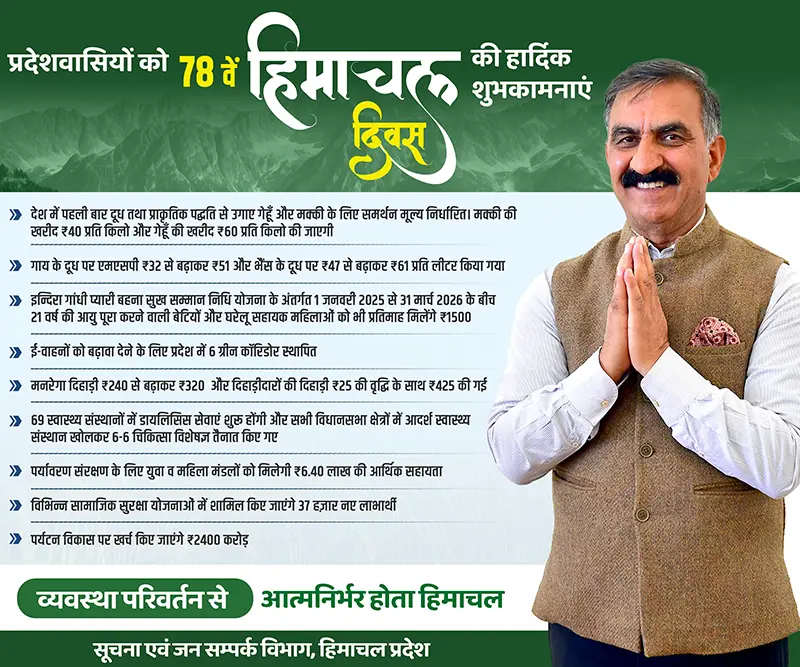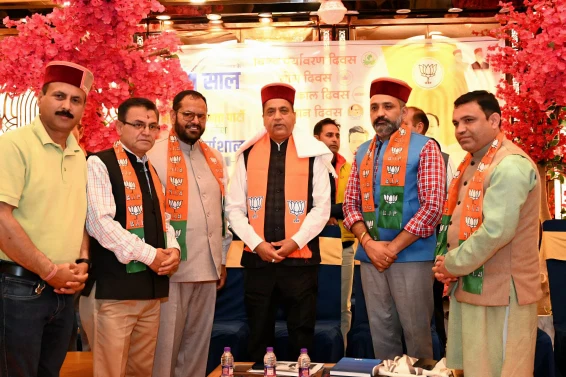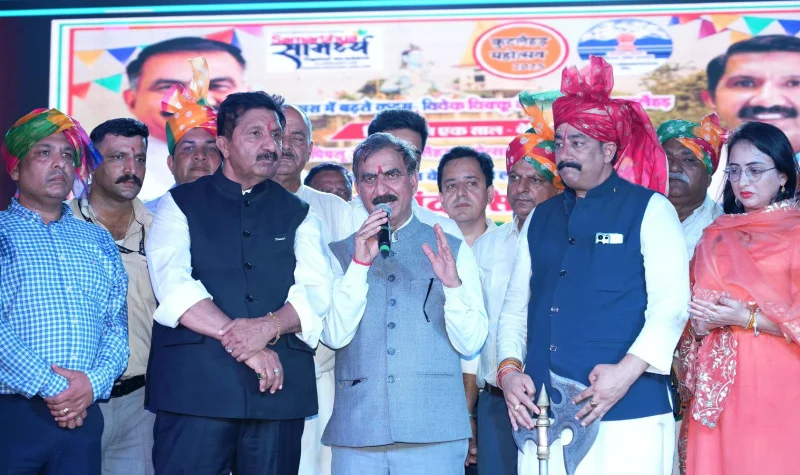Seasonal Snow Cover Variations in Himachal during 2022-23 and its comparative analysis with reference to 2021-22
5 min read
suggestive image
Ever since the inception of the State Centre on Climate Change under the aegis of the HP Council for Science Technology & Environment (HIMCOSTE ) by the Government of Himachal Pradesh, the Centre has been involved in undertaking various studies to understand the impact of climate change on its various facets.
The State of Himachal Pradesh receives winter precipitation in the form of snow at the higher altitudes. About 1/3rd of the total geographical area of the State remains under thick snow cover during the winter season. Most of the major rivers like Chenab, Beas, Parvati, Baspa, Spiti, Ravi,Satluj and its perennial tributaries originating from the Himalayas depend upon the seasonal snow cover for their discharge dependability. Besides this, the snow cover also helps in controlling the accumulation and ablation patterns of the glaciated regions in the State.
Considering the importance of seasonal snow cover as a major input in controlling the hydrology of the river basins, Director(Env.S&T)-cum-Member Secretary (HIMCOSTE) Sh.D.C.Rana informed that although we have the information about the total snow fall that takes place during winter season from the various observatories operating through out the State as a point information and therefore its spatial extent cannot be ascertained. Thus by using satellite data of different resolutions, it has now become possible to map the geographical extent of the area covered under snow during winter season. He further said that the studies which are being carried out by the Centre for mapping of seasonal snow cover in terms of its spatial distribution covers the different river basins in Himachal Pradesh during the winter season from October to April and is an important input in order to understand the contribution of snow in different catchments to sustain the hydrology of the river basins.
Considering the present trend of winter snowfall in Himachal Pradesh, the winter precipitation was mapped in all the basins viz Chandra, Bhaga, Miyar, Beas, Parvati, Jiwa, Pin, Spiti and Baspa using AWIFS satellite data having spatial resolution of 56mts w.e.f October to April . During 2022-23 snowfall was estimated and analyzed with reference to the average value of the total area under snow in each month from October to April. Based on the study carried out, the following inferences were drawn.
- Based on the analysis carried out during 2022-23, there was early snow fall in the month of October & November, there by leading to have positive trends in in Chenab and Beas basins, whereas the Ravi and Satluj has the negative trends i.e decrease in area under snow cover in 2022-23. During peak winter months (December-February), all the four basins i.e. Chenab, Beas, Ravi and Satluj have negative trends in comparison to last winter period and the worst affected basins were Ravi and Satluj, whereas the Chenab and Beas have comparatively better results
- Based on the comparative analysis, it is found that Chenab basin shows a decline of about 36%, Ravi by about 54% and Satluj by about 27% in comparison to 2021-22 during the month of October , whereas the Beas shows a slight enhancement in its area under snow by about 3% in 2022-23..
- Likewise, in November, Chenab basin reflected (5%) and Beas (21%) enhancement in its area in comparison to 2021-22, whereas the Ravi and Satluj shows a decline in its area under snow by about 3% (Ravi) and 22% (Satluj) in its comparison to 2021-22.
- In December, the decline was of the order of about 56% in case of Satluj basin and the least was of 10% in Chenab in their area under snow w.r.t 2021-22 results.
- Likewise in January, all the basins showing a decline in their area w.r.t 2021-22 wherein Chenab (5%), Beas (16%) Ravi (3%) and Satluj (38%) in comparison to 2021-22 respectively and in February, the decline was of the order of 4 % (Chenab), 32% (Beas), 12% (Ravi) and 17% (Satluj) basins respectively.
- Likewise in March, similar trend was observed with all basins showing decline in their area by about 2% (Chenab), 5%(Beas), 7%(Ravi) and about 4% (Satluj) basins w.r.t 2021-22 respectively .
- At the start of the summer ablation period i.e. April, shows the enhancement in the area under snow in each basins, wherein Chenab shows enhancement by 22%, Beas by 39%, Ravi by 54% and Satluj by 29% in the area under snow during 2022-23 in comparison to 2021-22 with Chenab occupying 85% of the basin area, Beas as 51%, Ravi as 33% and Satluj as 43% under snow in during April 2023 respectively.
- Thus to summarize, during early winter months (October to November), the only enhancement could be seen in case of Beas basin during both months, whereas Chenab shows a marginal increase in November only and the other two basins i.e. Ravi and Satluj showed a negative trend. During peak winter months (December to February), there was decline in the area under snow in 2022-23 in comparison to 2021-22 with maximum decline was observed in Satluj basin and the minimum was in Chenab basin. Almost same retreating trend was observed in each basin in March with some slight variations. At the beginning of the ablation period i.e. April, the winter precipitation extended to April as a result of which an enhancement of area seen in each basin. As a whole based on the analysis, it is observed that in Chenab basin 0.39% decline has been observed in 2022-23 in comparison to 2021-22, whereas in Beas the decline was of the order of 6.9%, in Ravi 22.42% and in Satluj, the decline was of the order of 14.61% in 2022-23 in comparison to 2021-22 in terms of the total spatial distribution of the snow cover area and a total 10% decline could be seen in the entire H.P. Himalaya covering all the four basins i. e Chenab, Beas, Ravi and Satluj based on the monthly average of the area under snow cover in each basin in 2022-23 in comparison to 2021-22.
In view of the study carried out, Sh Prabodh Saxena, IAS , Chief Secretary , Govt. of Himachal Pradesh apprised that , the State Centre on Climate Change of the HIMCOSTE has been carrying the studies on the Himalayan snow and glaciers for the last more than three decades and had generated the database on this part of the Western Himalayan Region. As reported based on the recent studies, the temperature on the Higher Himalayan region are comparatively higher than the low lying areas which is affecting our Himalayan reserves, which is evidenced by the fact that most of the glaciers are losing mass. Besides this a large shift has also been observed in the snow fall patterns during winters affecting the river discharged during the peak summer season. He further said that we have also seen the rising temperature effects during winters this time in Shimla as there was no snowfall in Shimla , which seems to be major change in the weather patterns and if this continues we have to think upon as we may have shortage of water in the coming years. I think there is need to take serious note on this and hopeful that the concrete steps like introduction of e-vehicles, shifting to renewable energy etc. taken by the Government would definitely help in reducing the GHGs emissions, so that the rise in temperatures could be checked even at micro scale as well.






